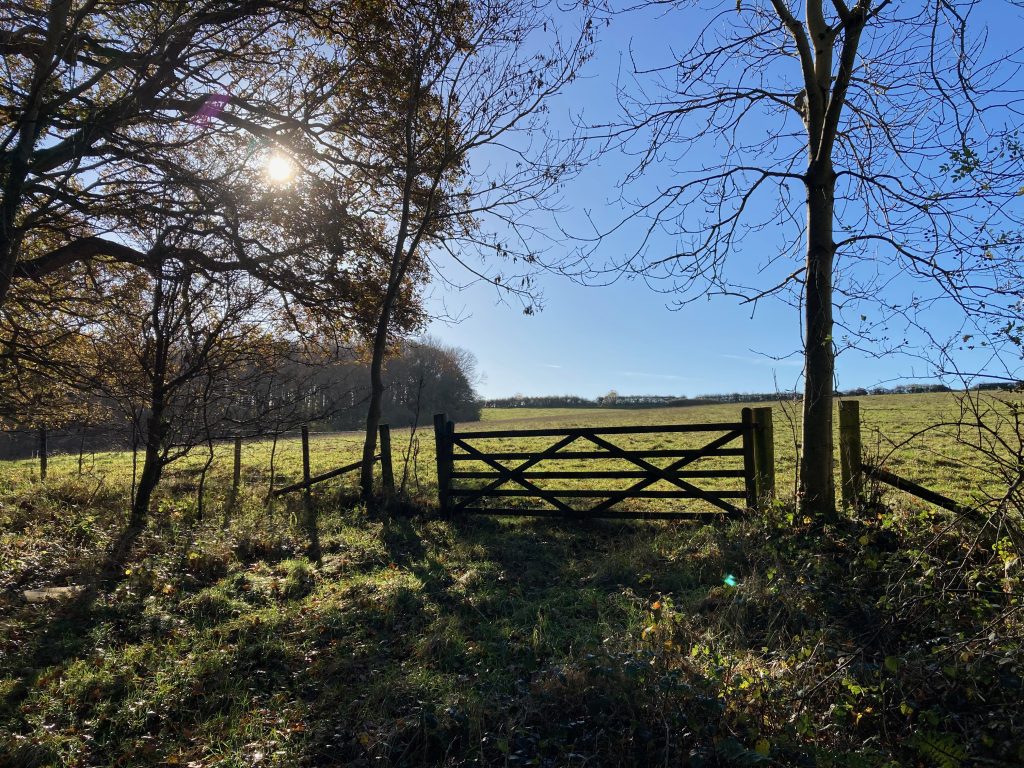The View from the Hill December 2023
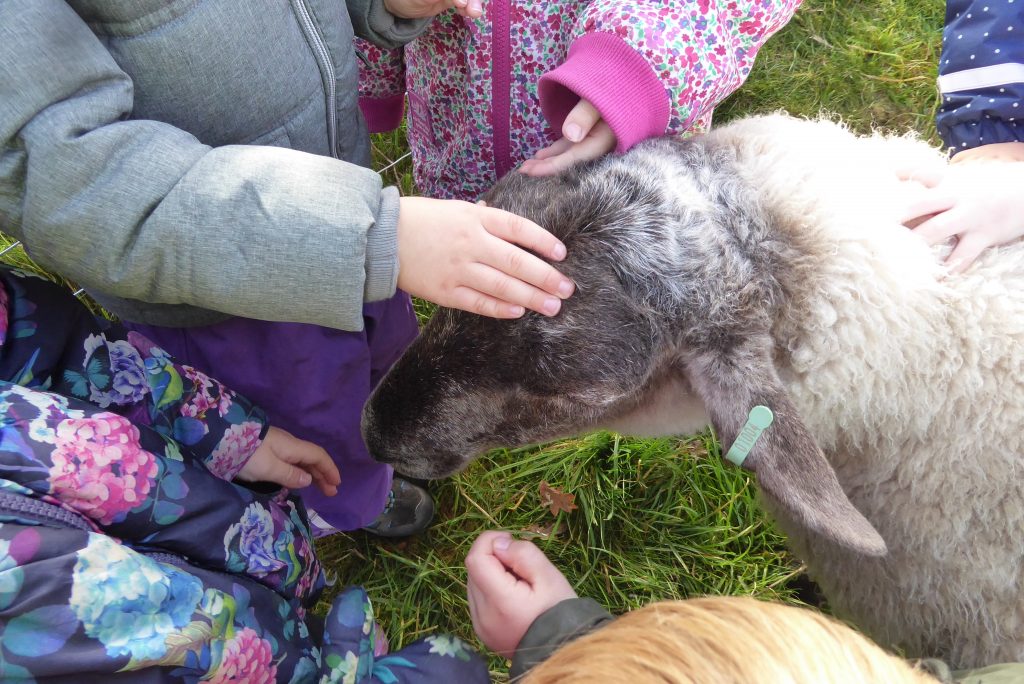
Daisy the sheep excels herself on the last school farm visit of the year. Such patience and gentle endurance. Everyone wants to stoke her, and she stays on long after all the toast has been eaten. Hands on experience is an important element of school visits, even in mid-November. Some of the ewes are wonderful with the children, much more tolerant than with adults.
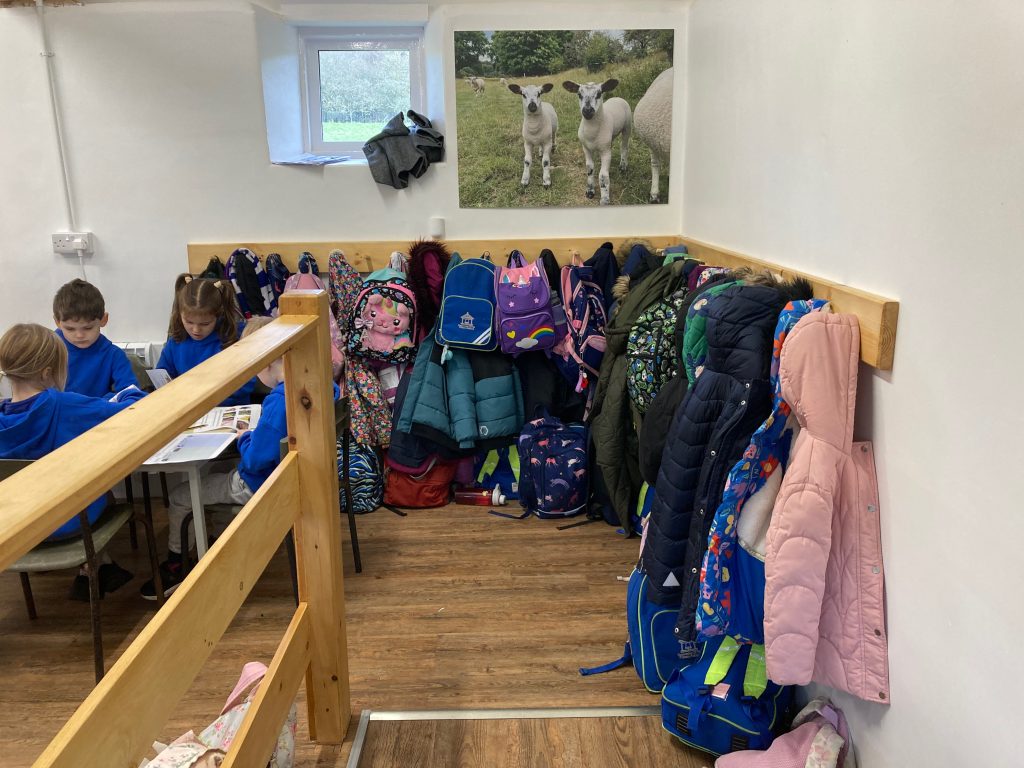
Last week saw the inaugural session in our kitchen classroom, a group of willing participants from Durweston school arrived ready to try out the programme that our friendly teacher Penny had worked out. The plan was for the children, with careful guidance, to prepare and cook a simple vegetable soup, including fresh farm-squeezed rapeseed oil, field grown potatoes, and onions from the garden. They would also be shaping and baking rolls made with 50% homegrown wheat flour, having first seen the wheat being ground into flour, and then if successful, taste the result. Penny brought along dough she had prepared the day before, using some of our wildfarmed wheat flour, which the children made into a variety of shapes. The bread was very tasty, and considerably more popular than the soup, although it too was very tasty. In between the cookery, the children painted farm flavoured pictures and did a cutting and sticking exercise to help them realise which foods originate locally, and which come from overseas.
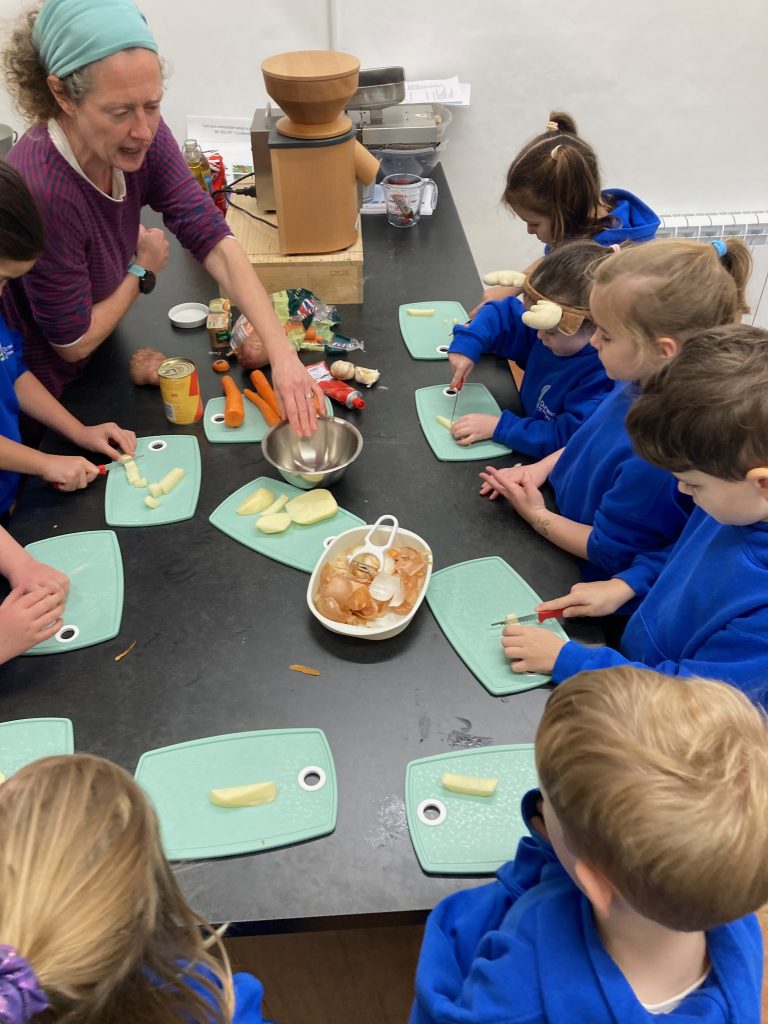
The cookery exercise is designed to cover the food and cookery element of the DT curriculum, which many schools struggle to deliver well, as they lack the facilities. We hope that our kitchen will be able to provide this for local schools. Penny’s carefully laid plans worked really well, the session romped along, the children approached the challenge with gusto, and the team of supporting adults were hugely enthusiastic.
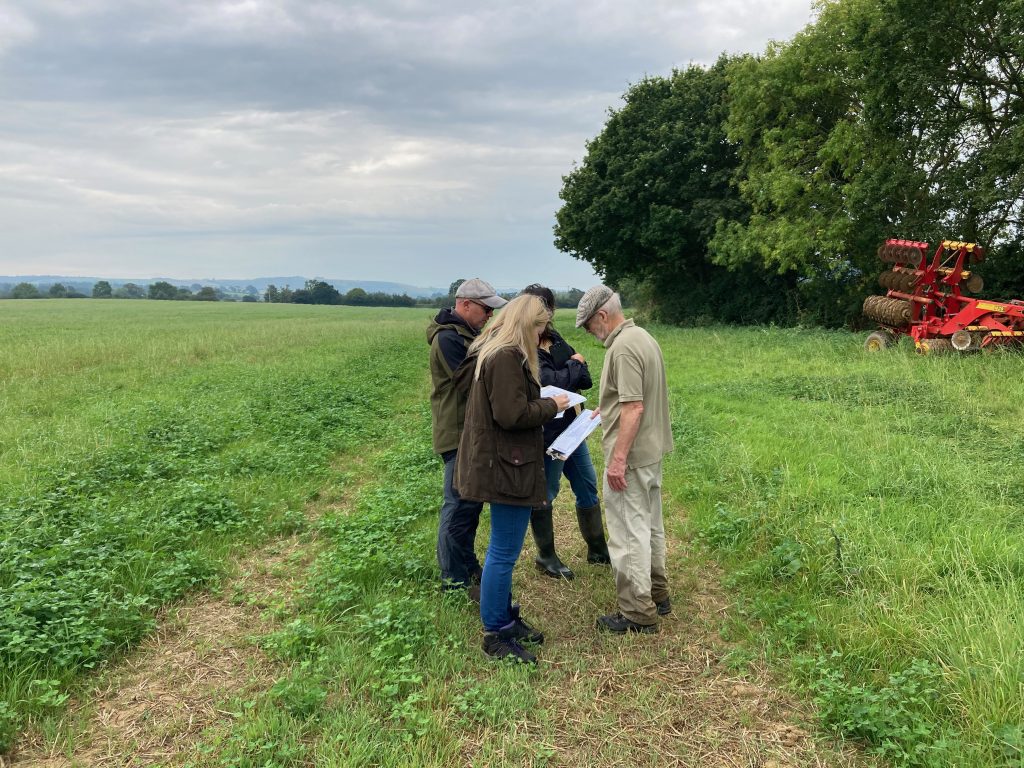
A few weeks ago, a few members of our cluster group met at Hammoon to learn how to survey hedges. Led by hedge expert John Calder, from Dorset Climate Action Network’s Great Big Dorset Hedge Project, we explored a few km of hedges around Adam’s farm, as well as finding them in pretty good condition, and mostly made up of a healthy mixture of species, there were plenty of trees too, and even hops, admittedly rare in Dorset. The prime purpose of our visit was to find out what we needed to do in order to take advantage of the hedgerow offer, part of the new Sustainable Farming Incentive standards (SFI). For this we don’t even have to record the species, but as John pointed out, it can be informative. An old rule of thumb runs as follows:
The number of tree and shrub species in a 30 metre length of hedge can indicate its age, with one species for each 100 years. A single species hedge is likely to be less than 100 years old whilst a 1,000 year old hedge is likely to contain ten to twelve species. However, this formula must be used with caution.
For example, how this is supposed to work if we are surveying our new hedges planted last winter, where we were planting up to 10 species within 30m, is anyone’s guess.
For the purposes of SFI, we simply have to assess each stretch of hedge around a field according to the Adams formula, which will help us to decide the most suitable management for the hedge in the future, whether trimming, laying, coppicing, gapping up etc.

There are bonuses available if you have a tree per 100m of hedge. These can be existing, newly planted, or a suitable hedge plant selected and marked to not be trimmed and allowed to grow up.
John and his team have been helping many farmers across Dorset to learn about this, and to get their hedges into SFI. John has put huge amounts of energy into the development of the SFI hedgerow standards, with numerous messages and presentations to DEFRA, RPA etc, and one enduring sadness is the absence of any incentive in SFI to actually plant new hedge. We very much hope this will materialise in the next chapter of releases. For more information about the Great Big Dorset Hedge project go here https://www.dorsetcan.org/hedge/
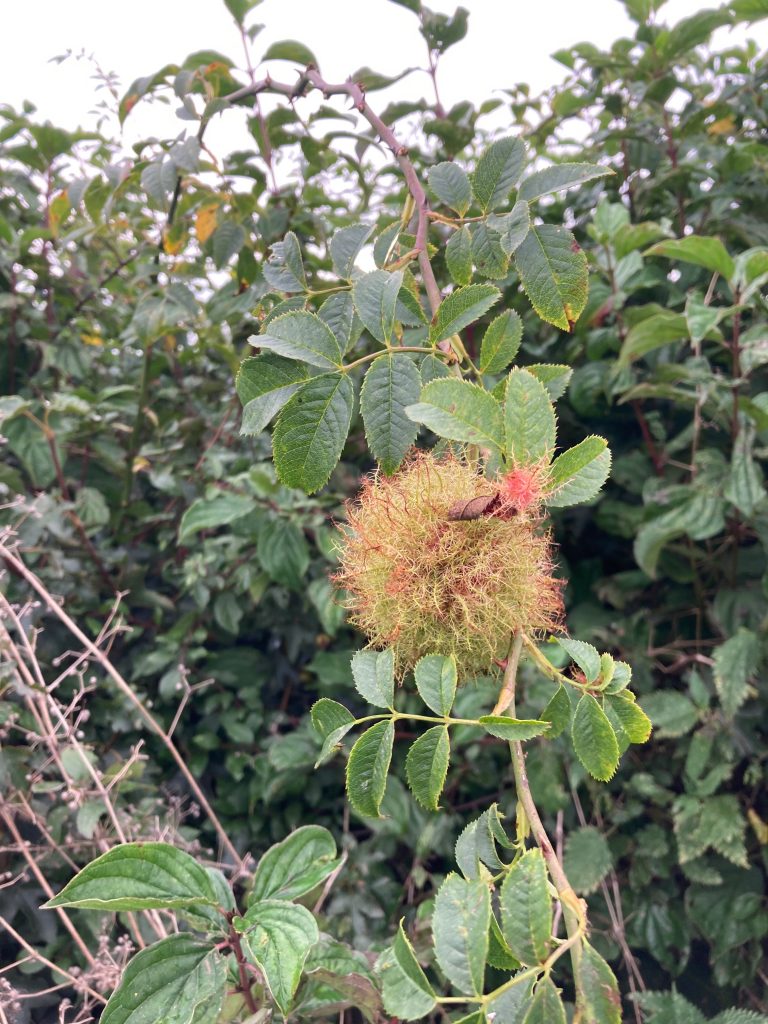
Who can identify this little bundle? It takes me right back to nature rambles when a child. They appear here and there in hedgerows containing a certain species.
I need the common name please, the species it is found on, and for a bonus point, what causes it. Please reply in comments below.
BOOK CORNER
It is too late to buy for pre-Christmas delivery now, but I would still like to recommend a few books:
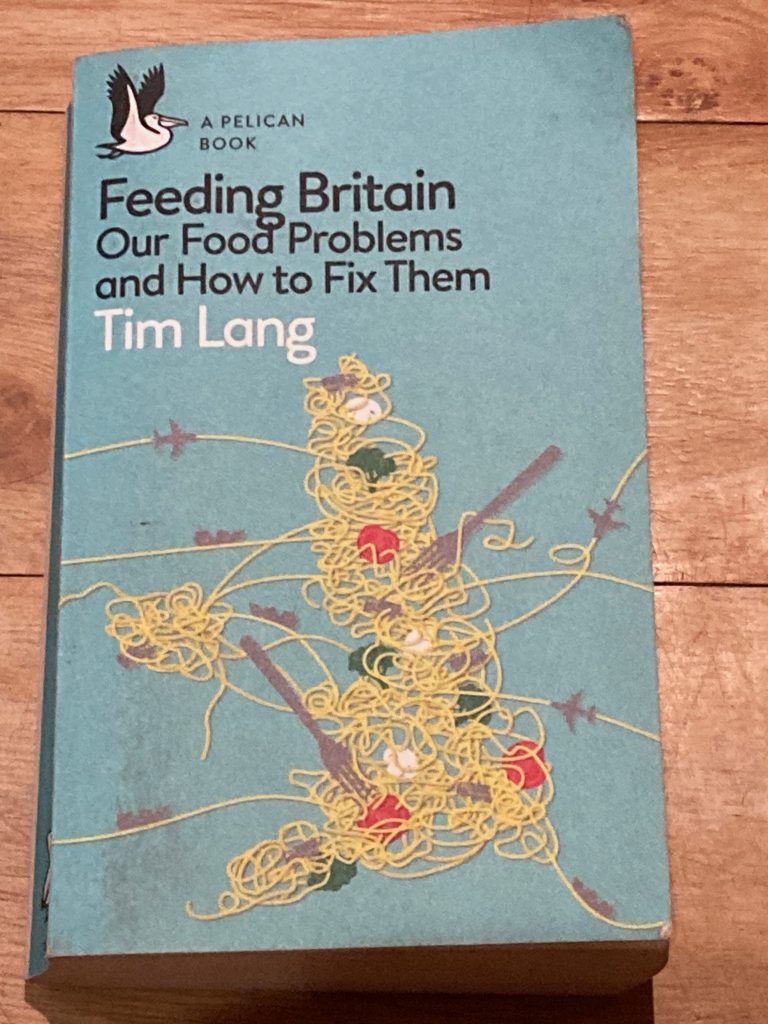
The first is quite a slog, not surprising bearing in mind the sweeping breadth implied by its title, it covers a huge amount of ground and in some detail: “Feeding Britain”, by Tim Lang. Here is the detailed account of how UK government could develop a food policy. We have policies for water, environment, climate, health and biodiversity, why on earth not food? After appointing Henry Dimbleby to lead the National Food Strategy Independent Review, government has sat on the report. Dimbleby has since written a book – “Ravenous” which I was given for Christmas, and have just begun, it covers much of what he found, and I am assured it is essential reading.
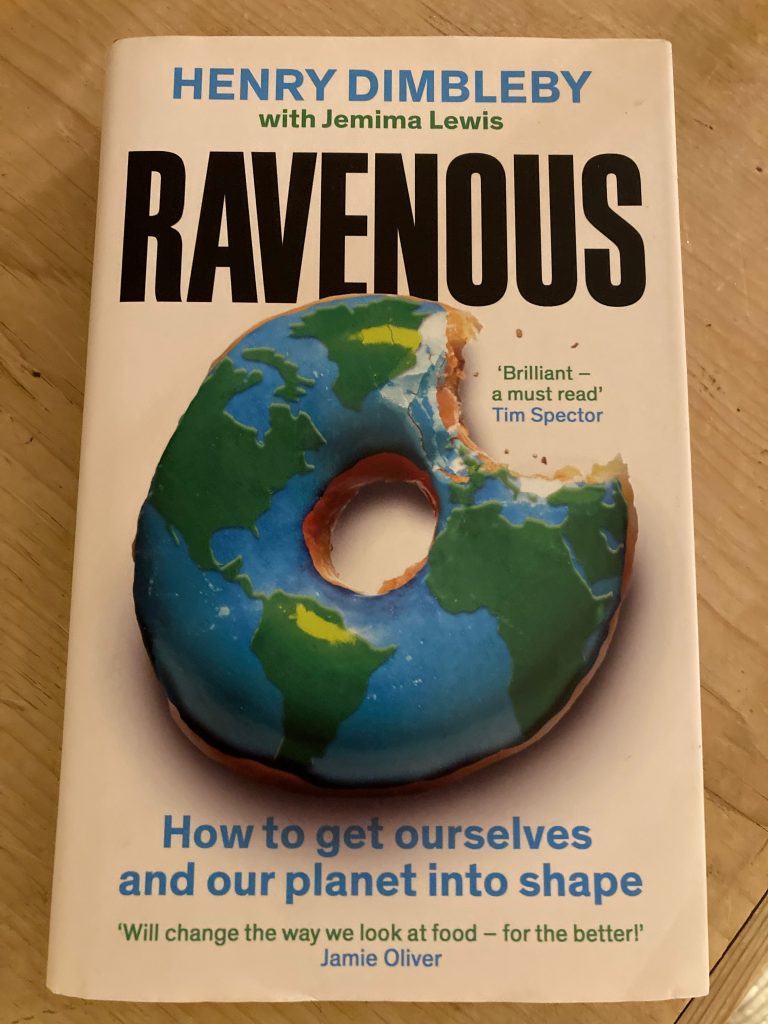
Why would a government not put food at the top of its list of concerns? We can actually survive in the short term without any of the above other than water, but without food, we die. Why is food not taken anything like as seriously as it should be? Why are we importing numerous foods which we can grow here, in our benign maritime climate with wonderfully productive soils, from countries which are desperately short of water? Why do we ban products or techniques here, but continue to import the same foods using those same (illegal here) methods, (hence undermining our own food industry)? And why are we signing trade deals which will allow more of this in the future. Tim Lang covers all of this and more. There are numerous pressures on land other than for food production, many of which earn more than food production can, especially now we are losing the (previously EU CAP) grant payments that used to enable us to produce food at below the cost of production. Many governments fully realise that one way to guarantee civil unrest is to allow food prices to rise out of line with everything else, and they will go to great lengths to prevent this from happening. In the UK it is simply a case of “let the supermarkets run it, they know how to keep their shelves full”. Except that they don’t. The huge shortage of eggs earlier this year, and the difficulty with salad crop supplies from Spain due to a drought resulted in empty shelves for a while. The UK has long believed, (dangerously in my view) that we will always be able to buy the food we need from elsewhere. Several tipping points have been met over recent months, such as those mentioned above, and we all know how panic buying causes utter chaos. Then why no national food policy??? Read these books, and join the debate.
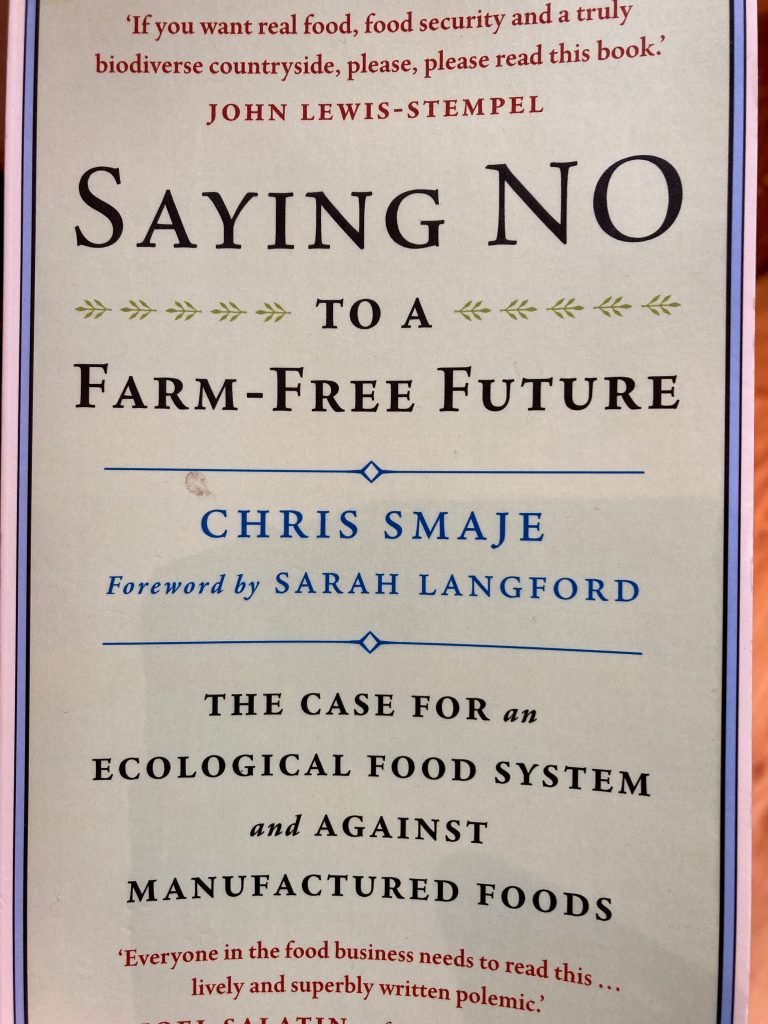
Have you read George Monbiot’s “Regenesis”? It is certainly stimulating, and a lot more besides. Chris Smaje has written a bold and intelligent riposte, “No to a farm free future”, subjecting Monbiot’s claims that we could all survive on bacterial gloop fermented in huge vats and abandon meat eating altogether, to close scrutiny. Having just finished the book, there is so much swirling around in my head, and so many leaves turned down for future reference, that it is hard to pick out headlines, however part of his argument centres around how much energy would be required to produce this intensively grown bacterial protein. If it were to be produced using renewable electricity, in order to provide all of humanity’s protein needs would require 9 times the amount of solar electricity currently produced worldwide, and that is before we consider the energy required to build the manufacturing plants. Monbiot’s line on moving the entire world away from meat eating towards manufactured protein seems to founder on some pretty basic ballpark calculations right at the start. This book examines his ideas in great detail and is a worthwhile read.
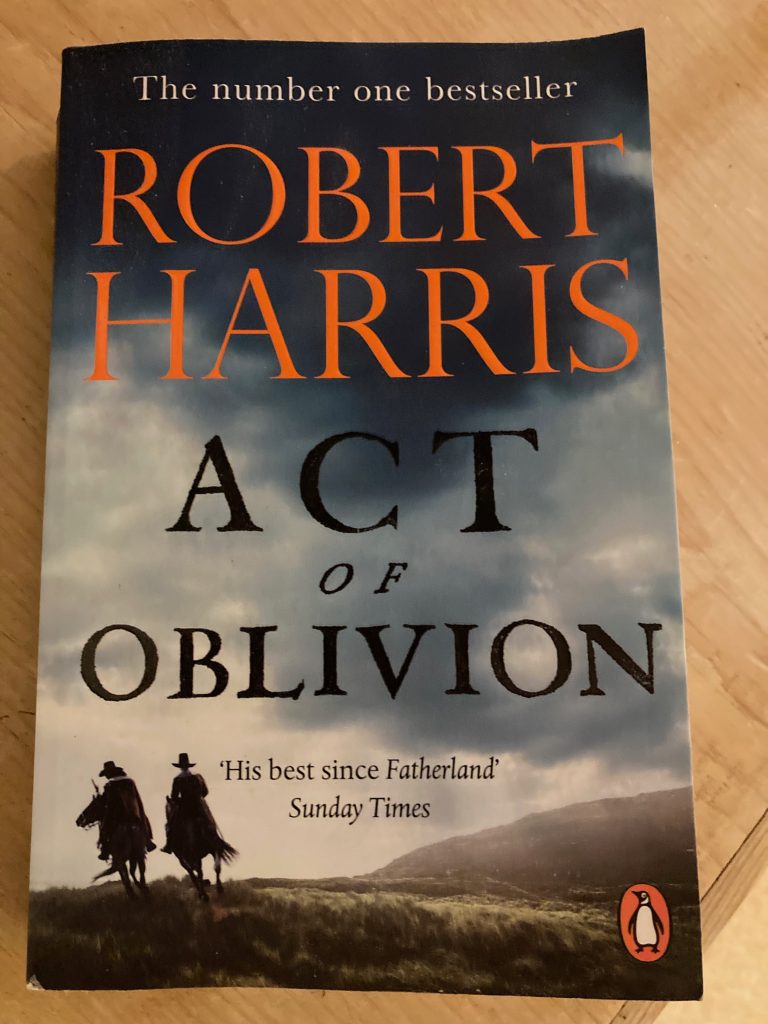
Last but not least, for a bit of a contrast, my regular birthday treat was the latest novel from Robert Harris. His books are always impeccably researched and imaginatively amplified to fever pitch in many places, this one, “Act of Oblivion” focusses on the execution of King Charles 1st in 1649, more specifically the tracking down of the 59 parliamentarians who signed the document sentencing him to beheading, a search instigated by Charles 2nd after the monarchy had been restored in 1660. A fascinating period of history, deeply entwined with religion, and the early days of the US where some of them had escaped to. Hard to imagine in the modern age where churches are falling into disuse, and the monarchy is little more than symbolic.
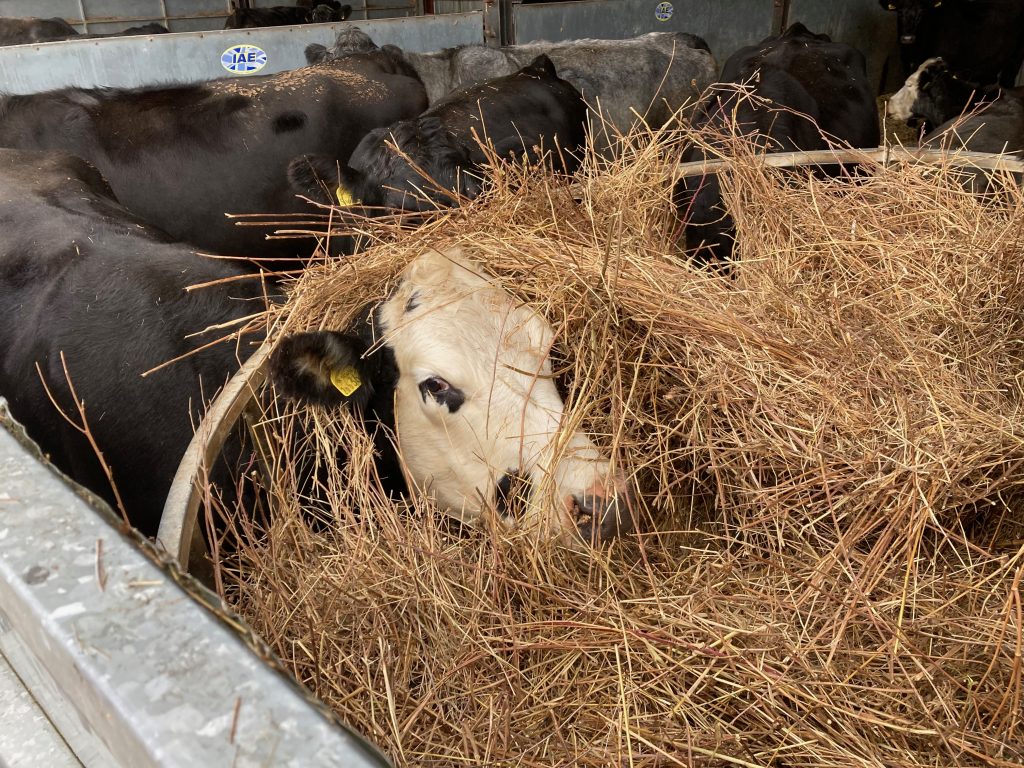
The cows are indoors for winter, the plumper ones munching on hay made from our wild flower margins, the thinner ones made on lovely soft sweet meadow hay. Much more digestible with less roughage. Pregnancy diagnosis detected 6 empty out of 70, which is a bit higher than it should be. The 3 empties we have kept have been banished to the steep banks of the valley, no nice warm shed for them. The young stock are in two groups grazing cover crops this year, there’s lots of leaf to eat, and a good many roots this year, thanks to the damp autumn, daikon radish and turnips abound. They get a fresh hectare every day, so they don’t over tread the ground, and leave plenty of green matter in place to grow on in the milder periods.
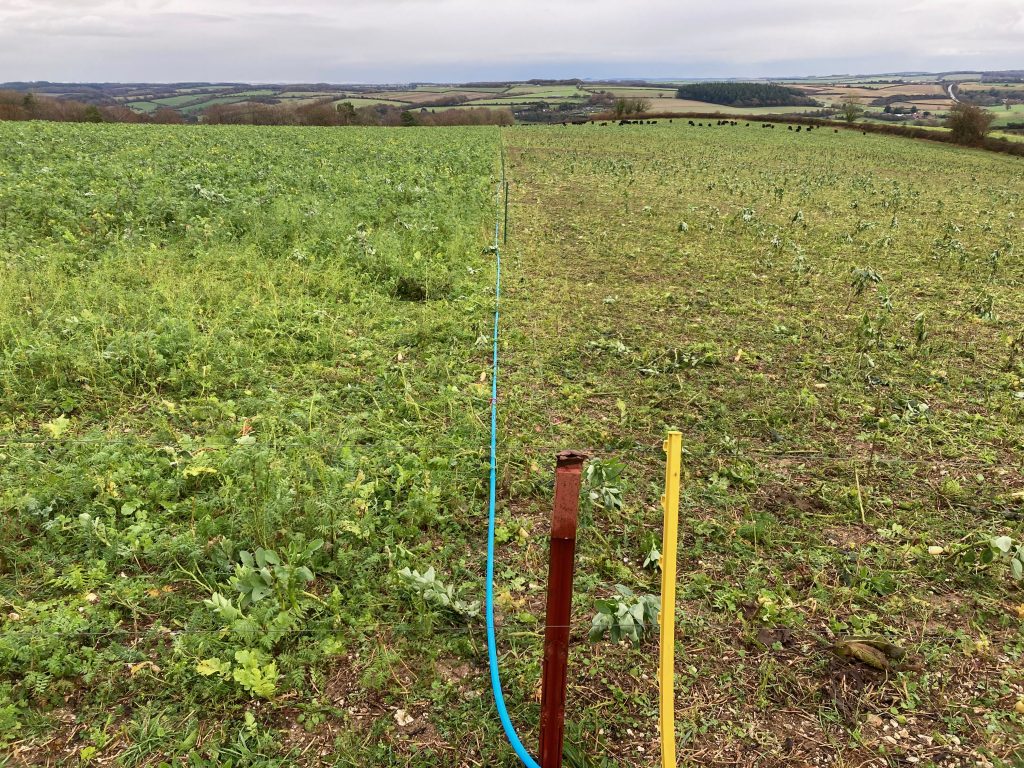
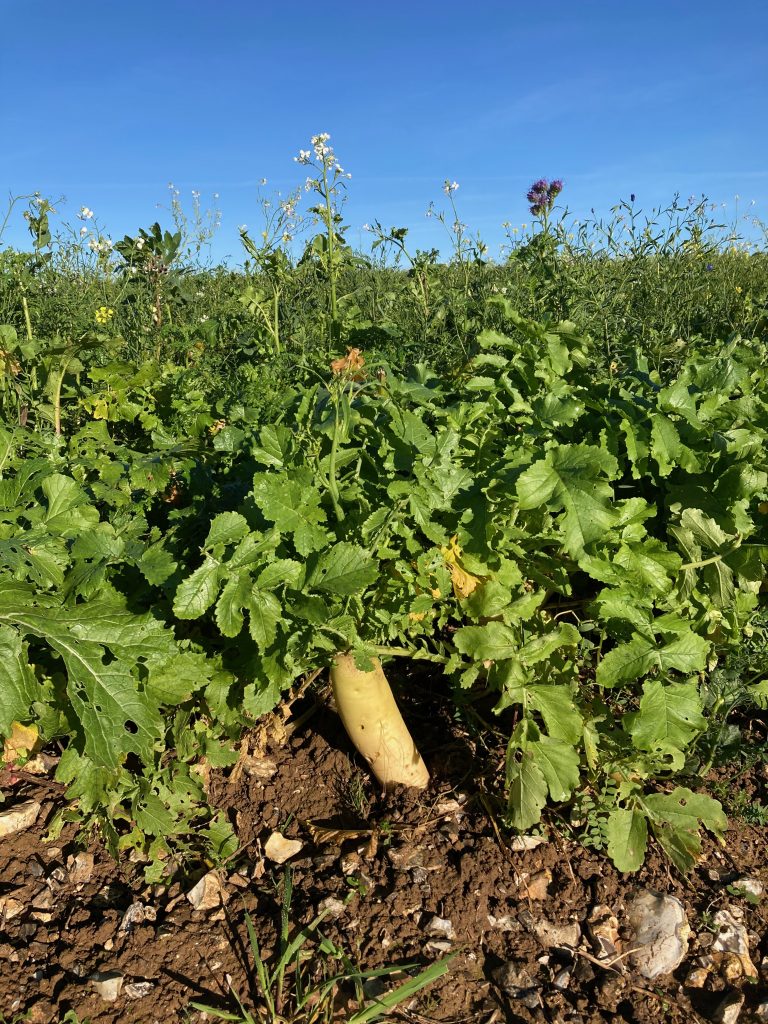
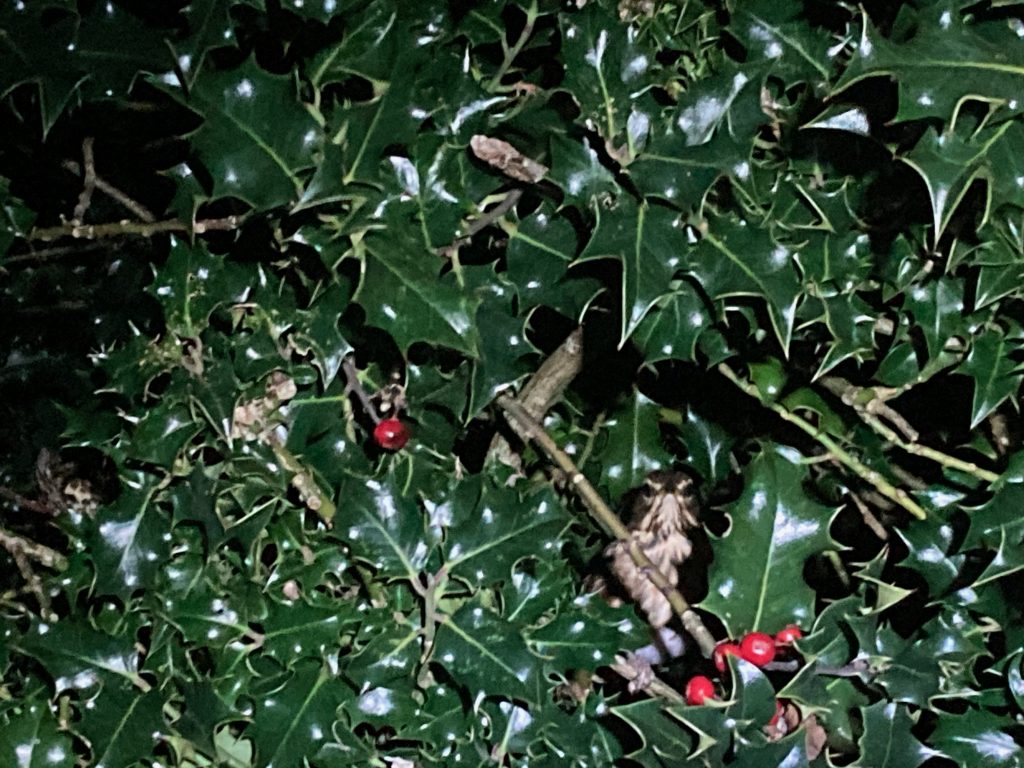
Spot the bird roosting in the holly bush, would anyone like to identify the species? Hit the comments section below!
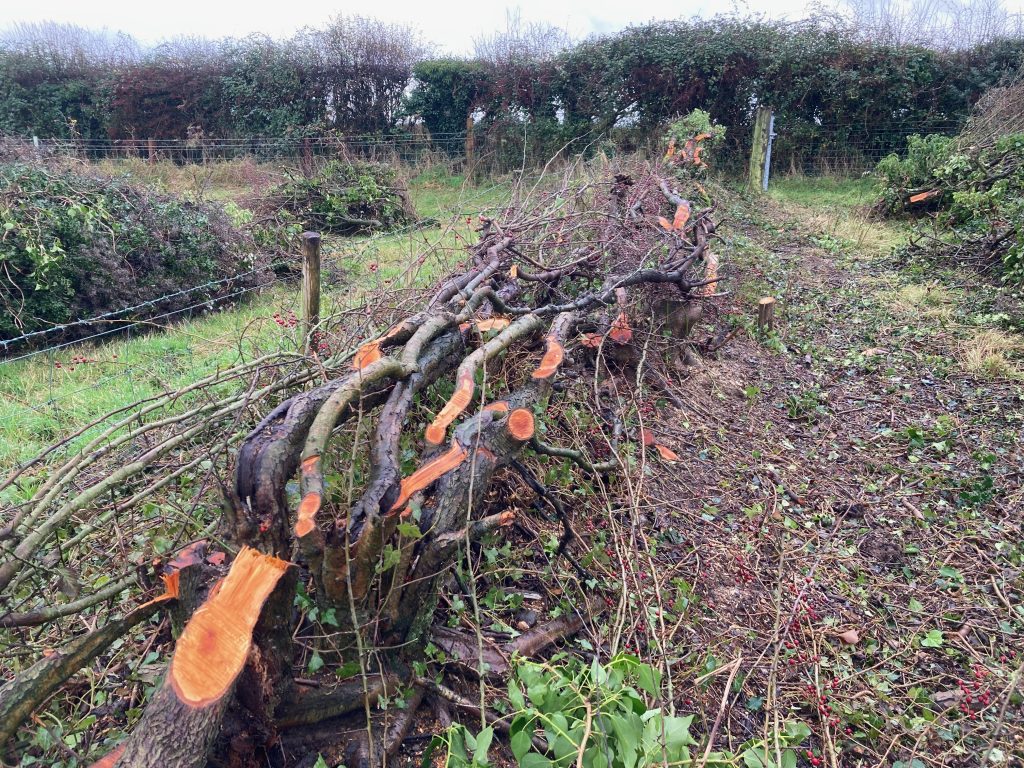
Brendan has started on a stretch of hedge laying, with tough gloves and the aid of a nifty electric chainsaw. Looking good so far, but there’s a way to go yet, please could we have some dry weather?
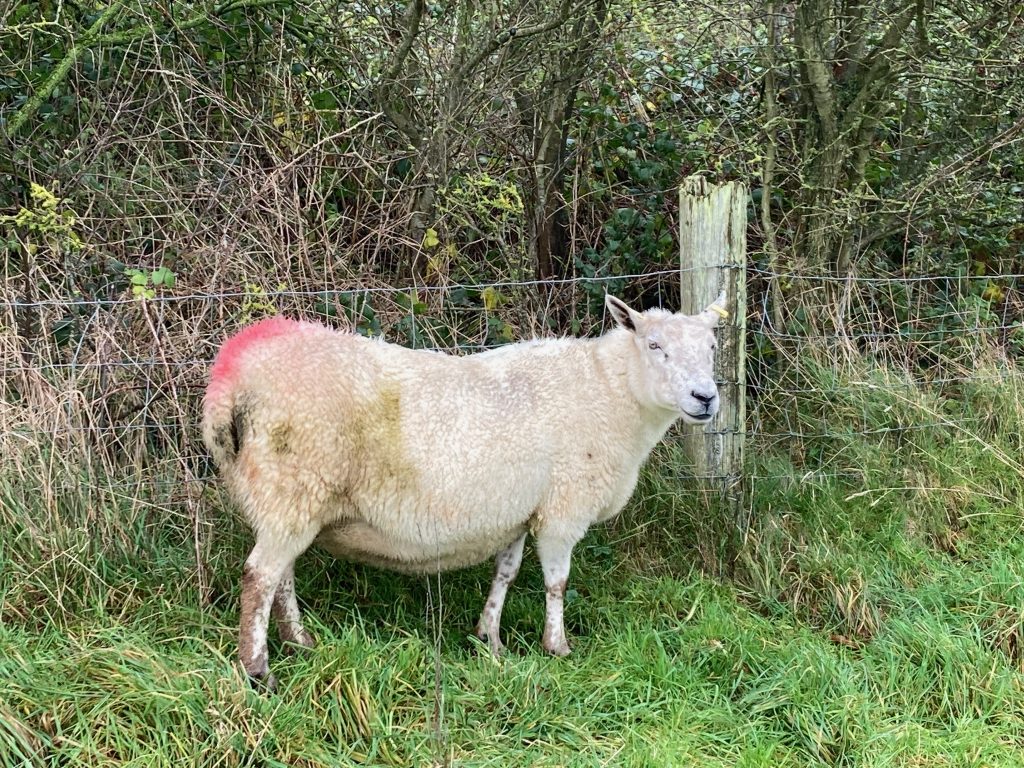
Reggie has been at work over christmas, all the ewes now have a red rump, we changed his raddle crayon last week, and none have yet turned blue. Let’s keep it that way and have a nice compact lambing period in May.
